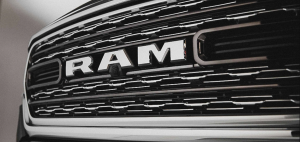 A car’s radiator has a vital role. It’s responsible for removing the heat from the engine to protect vital components from damage. Heat is absorbed by the liquid coolant and is transferred to the radiator, where it’s cooled. This cooling process starts as soon as your engine temperature goes over 180F. Although the radiator is designed for a hot, pressurized environment, it can get damaged. In Sallisaw, OK, your Chrysler dealer can help when you need a radiator repair.
A car’s radiator has a vital role. It’s responsible for removing the heat from the engine to protect vital components from damage. Heat is absorbed by the liquid coolant and is transferred to the radiator, where it’s cooled. This cooling process starts as soon as your engine temperature goes over 180F. Although the radiator is designed for a hot, pressurized environment, it can get damaged. In Sallisaw, OK, your Chrysler dealer can help when you need a radiator repair.
Damaged Radiator Cap
The radiator cap is on the top of the radiator. It has two functions to control the pressure in the cooling system and to prevent coolant from escaping. The cap maintains a high pressure in the system to allow the coolant to move faster. If the pressure in the system rises too high, the cap will open and release the excess pressure. When the pressure has returned to normal, the cap will close again.
Wear and tear can damage the seals around the base of the cap. It’s also possible for the cap to jam and either prevent pressure from escaping or allow the pressure to escape. If the seals fail, coolant can leak out from the cap. You can check for a possible leak by examining the cap. If there are white streaks, this shows a previous coolant leak. Our technicians can test the cap, and we’ll replace it with a new one if it’s damaged.
Rising Engine Temperature
The temperature gauge on your dash should hover around 195 – 200F. This temperature might sound high, but it’s a normal safe operating temperature. The needle sits around the mid-point of the gauge. The temperature can read higher than this, especially if you’re driving on a hot day. A temperature gauge that climbs higher or that approaches the redline means something is wrong.
When your car’s temperature rises above 180F coolant is released into your engine. This liquid absorbs engine heat and transports it to the radiator for cooling. This process will continue until the temperature in the engine drops below 180F. A coolant leak, blocked radiator fins, or sludge in the radiator can prevent the cooling system from working properly. If you see your engine temperature rising, call our service department immediately. Our technicians will find the source of the problem.
Blocked Radiator
When hot coolant is pumped into the radiator, it flows into a series of thin tubes. The tubes help with the cooling process, as they provide a greater surface for the air to blow over. These thin tubes can be easily damaged by any debris that blows in through the grille.
Damage to the tubes can block them, and prevent the coolant from being cooled. This will cause the engine temperature to rise. We can’t repair the damaged tubes, but we can replace your radiator.
To protect your car from overheating, call our service department ASAP at Blue Ribbon CDJR.








